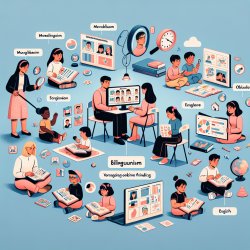The field of Clinical Natural Language Processing (NLP) is rapidly evolving, driven by the need to transform unstructured clinical data into standardized formats that can be easily shared and analyzed. One groundbreaking development in this area is the implementation of a common type system, as detailed in the research article "A Common Type System for Clinical Natural Language Processing" by Wu et al. This system aims to enhance interoperability between structured and unstructured data within electronic medical records (EMRs), offering significant benefits for healthcare practitioners.
The Importance of a Common Type System
Clinical data stored in EMRs are often heterogeneous, making it challenging to reuse and analyze this information effectively. A common type system addresses this issue by providing a standardized framework for data representation. This framework enables different NLP systems to encapsulate knowledge from text and share it alongside diverse clinical data sources, thereby facilitating interoperability.
The common type system described by Wu et al. has been implemented in the Unstructured Information Management Architecture (UIMA) and is fully functional in the open-source clinical NLP system cTAKES (clinical Text Analysis and Knowledge Extraction System). By targeting deep semantics based on Clinical Element Models (CEMs), this type system allows for more comprehensive integration with structured data types.
Practical Applications for Practitioners
For practitioners looking to improve their skills in clinical NLP, implementing the common type system can offer several advantages:
- Enhanced Data Interoperability: By using a standardized type system, practitioners can ensure that their NLP systems are compatible with other systems, facilitating seamless data exchange across different clinical settings.
- Improved Patient Outcomes: With better access to comprehensive patient data, healthcare providers can make more informed decisions, ultimately leading to improved patient care and outcomes.
- Easier Integration with Existing Systems: The common type system is designed to work with existing NLP tools like cTAKES, making it easier for practitioners to integrate new capabilities into their current workflows.
Encouraging Further Research
The implementation of a common type system is just the beginning. There is still much to explore in terms of optimizing NLP techniques and expanding the capabilities of these systems. Practitioners are encouraged to delve deeper into the research and consider participating in studies or projects that further develop these technologies.
The potential applications of a common type system extend beyond healthcare, offering opportunities for innovation in areas such as epidemiological studies and disease prevalence characterization. By contributing to this growing body of research, practitioners can play a vital role in advancing the field of clinical NLP.
A common type system for clinical natural language processing










